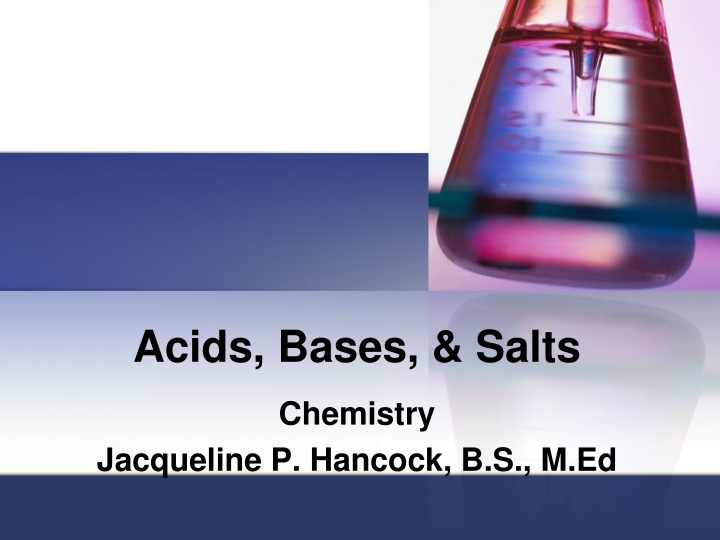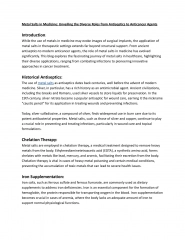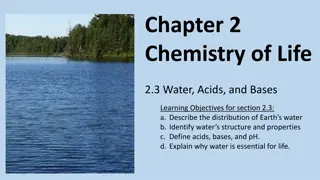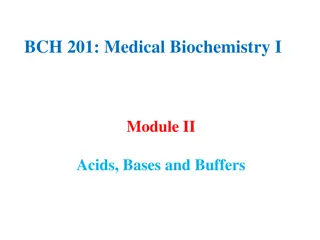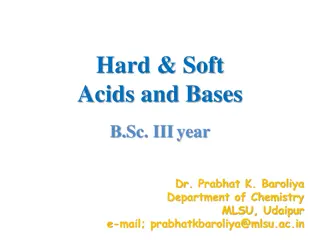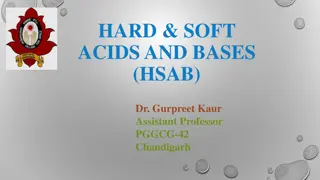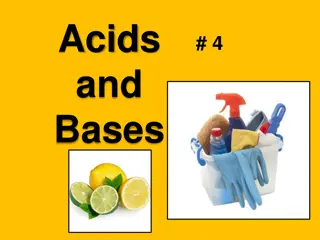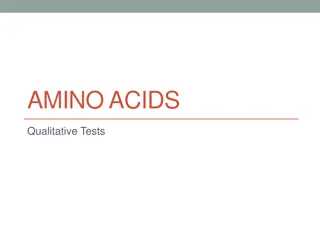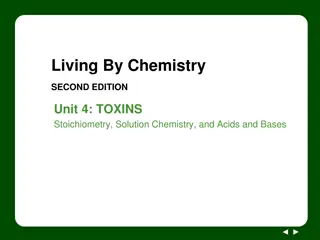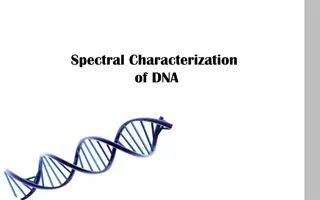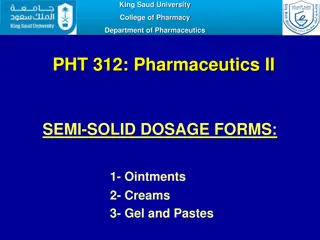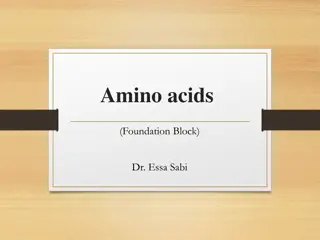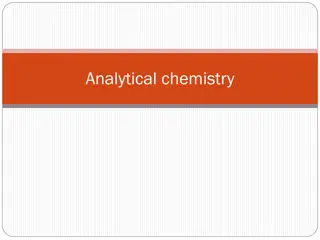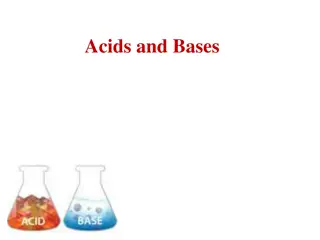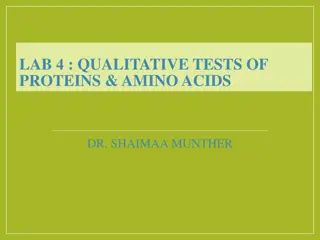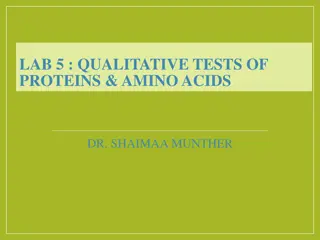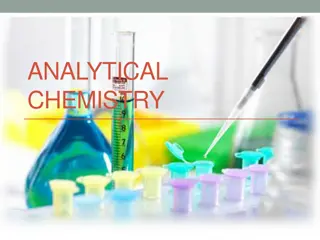Acids, Bases, & Salts
Understanding bacterial taxonomy and staining methods is crucial in microbiology. Explore how bacteria are classified, identified, and differentiated using techniques like Gram staining. Learn the procedures for preparing bacterial smears, distinguishing between strains, and grouping them based on specific criteria of interest to microbiologists.
Download Presentation

Please find below an Image/Link to download the presentation.
The content on the website is provided AS IS for your information and personal use only. It may not be sold, licensed, or shared on other websites without obtaining consent from the author.If you encounter any issues during the download, it is possible that the publisher has removed the file from their server.
You are allowed to download the files provided on this website for personal or commercial use, subject to the condition that they are used lawfully. All files are the property of their respective owners.
The content on the website is provided AS IS for your information and personal use only. It may not be sold, licensed, or shared on other websites without obtaining consent from the author.
E N D
Presentation Transcript
Acids, Bases, & Salts Chemistry Jacqueline P. Hancock, B.S., M.Ed
What is expected of me today? Lecture Practice Problems Progress Reports
Acid-Base Theories Type Acid Base Arrhenius H+ producer OH- producer Br nsted-Lowry H+ donor H+ acceptor Lewis Electron-pair acceptor Electron-pair donor
Properties of Acids & Bases Acids Sour taste Turn blue litmus RED React with metals to produce hydrogen gas React with carbonates to produce carbon dioxide Bases Bitter taste Turn red litmus Blue Slippery to touch Do not react with metals or carbonates
Self- Ionization of Water (Dissociation) H2O Highly polar Constant motion Pure water contains small concentration of H+& OH-as well as H2O molec High energy collisions allows transfer of H+ions from one H2O to another Self-ionization-reaction of like molecules to produce ions
@ 25oC Equilibrium [H+] is 1x10-7M Equilibrium [OH-] is 1x10-7M Therefore the ion concentrations in pure water are equal making it Neutral
Acid or Base? If the H+ is greater than -7 it is.. If the H+ is less than -7 it is If the H+ is equal to -7 it is To determine whether a solution is acidic or alkaline(basic) Use the exponent value for the ion given
Practice Problems Classify as acidic, basic, or neutral a) [H+]= 6x10-12M b) [OH-] = 3.0x10-2M c) [H+] = 2.0x10-7M d) [OH-]= 1.0x10-7M
Ion Concentration To determine the ion concentration use the Ion- product constant for water Rearrange the formula to isolate the unknown variable (solve for the missing variable) Plug in the known values Ion-Product Constant Formula g
Practice Problems If the [H+] in a solution is 1.0x10-5M, what is the [OH-] of this solution? If the hydroxide-ion concentration of an aqueous solution is 1x10-3M, what is the [H+] in the solution? Is the solution acidic, basic, or neutral?
pH 1909 Danish scientist S ren S rensen developed pH scale of 0-14 (acid to base) pH is the negative logarithm of the hydrogen-ion concentration of a solution pH= -log[H+] pOH= -log[OH-] pH + pOH = 14
Acid Neutral pH= 7.0 Basic pH < 7.0 [H+] > 1x10-7M [H+] = 1x10-7M pH>7.0 [H+] < 1x10-7M
Calculating pH Find the pH of each solution [H+] =1x10-4M [H+] = 0.0015M Calculation pH from [H+] pH= -log[H+] 2nd-log[H+] a) b) What are the pH values of the following solutions, based on their hydrogen-ion concentrations? [H+] = 1x10-12M [H+]= 0.045M a) b)
Calculating pH Calculating [H+] from pH Use pH = -log[H+] First rearrange equation -log[H+] = pH Change signs log[H+] = -pH Find anti-log of value 2ndlog(-pH value) Make sure in Sci mode Calculating pH from [OH-] Use Kwformula Use pH= -log[H+] First find [H+] Second find log[H+] -log(H+ value) Answer should be positive!!!
Practice Problems Calculate [H+] for each solution pH= 5.0 pH= 12.83 pH= 4.0 pH= 11.55 Calculate the pH of the solution [OH-]= 4.3x10-5M [OH-]= 4.5x10-11M [H+] = 5.0x10-5M [H+]= 8.3x10-10M
Acid-Base Indicators An indicator(Hln) undergoes dissociation in a known pH range Changes colors in different solutions Limits of liquid indicators Optimal temp 250C Color sol. Can distort Dissolved salts can affect dissociation Paper indicators pH meters Know Figure 19.2 Thymol Blue Bromphenol Blue Bromcresol green Methyl Red Alizarin Bromthymol Blue Phenol Red Phenolphtalein Alizarin yellow R
